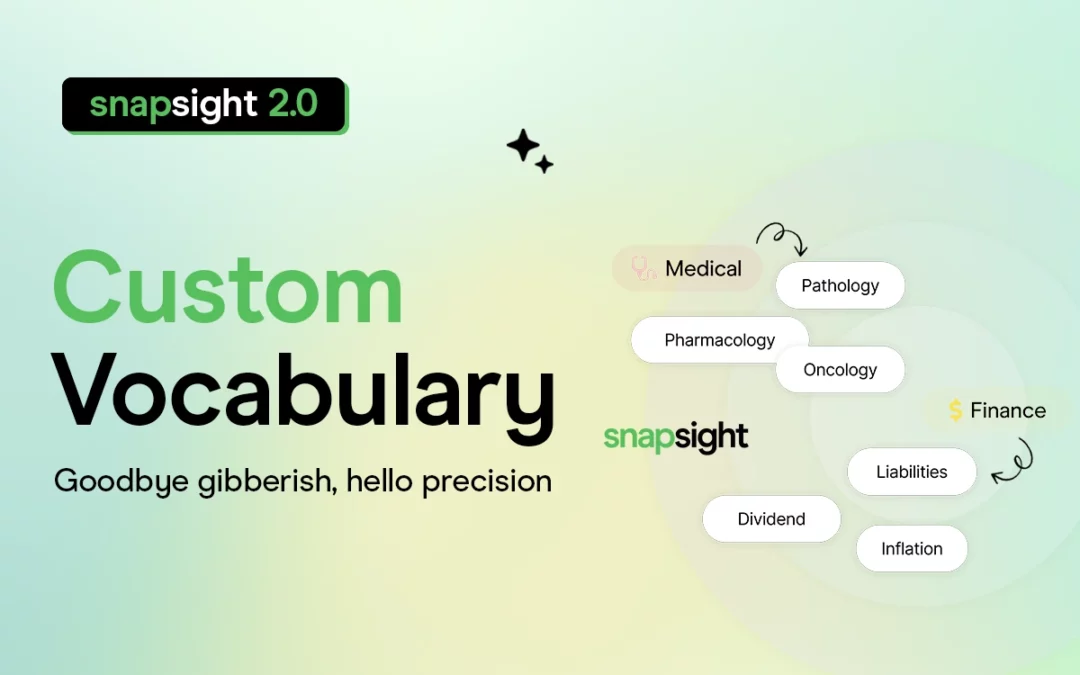AI transcription services have revolutionized how we convert speech to text. Leveraging automated speech recognition and voice-to-text conversion, these innovative solutions transform audio and video content into written text with remarkable speed and accuracy. As the demand for efficient content management grows, AI transcription services are becoming indispensable across various industries.
Understanding AI Transcription Services
What Are AI Transcription Services?
AI transcription services use artificial intelligence to convert spoken language into written text. They combine speech recognition technology with Natural Language Processing (NLP) to recognize spoken words, understand context, and apply appropriate punctuation.
How Do AI Transcription Services Work?
The process involves several key steps:
- Speech Recognition: Algorithms analyze audio input, breaking it down into phonemes.
- Acoustic Modeling: Deep learning matches sounds to known speech patterns.
- Language Modeling: NLP techniques predict the most likely sequence of words.
- Text Generation: The processed information is converted into readable text.
This process occurs in real-time, allowing for immediate transcription of live or pre-recorded content.
AI vs. Human Transcription
While human transcription has been the standard, AI services are rapidly catching up:
- Speed: AI transcription is significantly faster, often providing real-time results.
- Cost: Automated services are generally more cost-effective.
- Scalability: AI can handle large volumes of audio without fatigue.
- Consistency: Machine learning ensures uniform quality across long transcriptions.
Benefits of AI Transcription Services
- Unmatched Speed and Efficiency: Real-time transcription enables immediate access to written content.
- Cost-Effective Solution: Automation significantly reduces transcription costs, especially for large-scale projects.
- Improved Accuracy: Deep learning continually enhances transcription accuracy.
- Scalability: AI can manage vast amounts of audio content efficiently.
- Multilingual Support: Advanced machine translation allows for cross-language transcription.
- Enhanced Accessibility: Automated captioning improves content accessibility for the hearing-impaired.
- Seamless Integration: API integration allows for easy incorporation into existing systems.
By leveraging these benefits, organizations can streamline operations, improve content accessibility, and gain new insights from their audio and video content.

Popular AI Transcription Services and Tools
The AI transcription market offers a variety of solutions to meet different needs. Some of the leading services include Otter.ai, Rev.com, Trint, Sonix and Google Speech-to-Text. These services leverage advanced speech-to-text technology and cloud-based processing for efficient transcription. While they excel in converting audio to text, there’s a growing need for tools that can extract deeper insights from spoken content.
Snapsight: Enhancing Events with AI-Powered Insights
Complementing traditional transcription services, Snapsight takes event experiences to the next level. This innovative platform offers:
- Real-time content summarization
- Visualization of key themes through its “Idea Cloud” feature
- Multi-language support for global events
- Transformation of event data into actionable intelligence
By combining Snapsight with transcription services, event organizers can create more immersive and valuable experiences. Snapsight distills complex information into key takeaways, making it easier for participants to grasp essential concepts and share insights across platforms.
Applications of AI Transcription Services
AI transcription services have found applications across numerous industries:
- Content Creation and Blogging: Quickly convert interviews or podcasts into written content.
- Video Production: Create accurate captions for better accessibility and SEO.
- Business Meetings: Generate detailed minutes with speaker diarization.
- Legal and Medical Industries: Handle specialized vocabulary for accurate records.
- Education: Enhance accessibility by providing written versions of lectures.
- Media and Journalism: Process interviews and press conferences in real-time.
Overcoming Challenges in AI Transcription Services
While AI transcription services have made significant strides, they still face several challenges:
- Accent Recognition and Dialect Handling: Improving understanding of diverse speech patterns.
- Background Noise: Developing better noise cancellation techniques.
- Technical Vocabulary: Offering custom vocabulary features for specific industries.
- Privacy and Security: Ensuring protection of transcribed data.
- Ethical Considerations: Addressing data ownership and consent issues.
Despite these challenges, ongoing advancements in AI continue to improve transcription capabilities, making these services increasingly reliable and versatile across various applications.
Future of AI Transcription Services
The future of AI transcription services is promising, with several emerging trends:
- Enhanced Accuracy: Evolving neural networks and language models will likely approach or surpass human-level accuracy across diverse accents and vocabularies.
- Real-Time Language Translation: Future tools may provide instantaneous translation between languages, breaking down communication barriers.
- Emotion and Sentiment Analysis: Advanced services may detect and annotate emotional cues in speech, providing valuable insights for various fields.
- Integration with Other AI Tools: Closer integration with technologies like natural language understanding and text analytics could lead to more comprehensive content analysis.
- Improved Non-Verbal Communication Handling: Future tools may better capture pauses, emphasis, and even gestures in video transcription.
These advancements will continue to impact various industries, streamlining workflows and unlocking new possibilities for content creation and analysis.
Conclusion
AI transcription services have revolutionized speech-to-text conversion, offering unprecedented speed, accuracy, and scalability. These tools are transforming how we capture and utilize spoken information across multiple sectors, from content creation to legal proceedings.
Looking ahead, AI transcription services are set to become more sophisticated, accurate, and integrated with other AI-powered tools. This evolution promises to unlock new insights from our spoken communications and further bridge the gap between audio and text-based content.
Whether you’re a content creator, business professional, or educator, exploring AI transcription services could significantly enhance your ability to manage and leverage spoken information. As these technologies evolve, they will undoubtedly play an increasingly vital role in our digital communication landscape.

